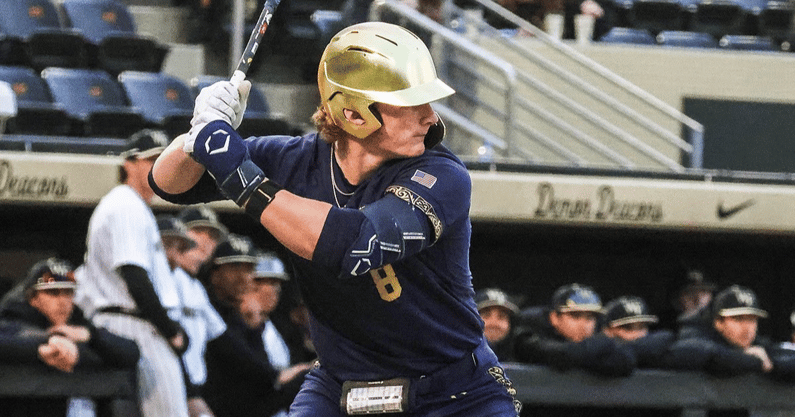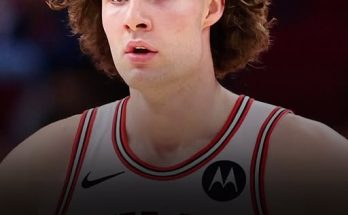The winds of change continue to sweep through college baseball, and on Tuesday, those gusts blew through South Bend. Notre Dame catcher Carson Tinney, one of the program’s most promising young talents, officially entered the NCAA transfer portal. But it wasn’t the mere act of entering the portal that raised eyebrows — it was the nature of his departure. Tinney submitted his name with a “do not contact” tag, signaling not just a willingness to explore other opportunities, but a firm resolve and already developing plan for what’s next.
For Notre Dame baseball fans and insiders, the move comes as a jarring surprise. Tinney, who had shown glimpses of his potential behind the plate and at the dish, was widely viewed as a foundational piece for the future of the program. A defensive stalwart with a strong arm, solid instincts, and improving offensive production, Tinney was expected to be a long-term answer at the catcher position. His decision to enter the portal — and to do so in a way that prevents other programs from reaching out to him unless he initiates contact — is a bold step and one that invites speculation and intrigue.
The “do not contact” designation is uncommon and typically reserved for student-athletes who already know where they’re going next or have narrowed their focus to a very small pool of destinations. It cuts through the usual noise of the portal process, where players are inundated with interest from across the country, and instead provides a clear message: I’ve already made my decision — or close to it. For Tinney, a Georgia native with a reputation for being both intensely private and fiercely competitive, the decision appears calculated, not impulsive.
As the catcher position continues to be one of the most vital yet undervalued roles in college baseball, Tinney’s departure leaves a noticeable void for the Fighting Irish. More than just the player they’re losing on the field, Notre Dame is saying goodbye to a student-athlete who embodied much of what the university holds dear: discipline, intelligence, and quiet leadership. Tinney wasn’t the loudest player in the locker room, but his presence was unmistakable. Coaches often praised his ability to manage a pitching staff well beyond his years, and his poise in pressure situations belied his age.
Tinney’s exit also raises larger questions about the current climate within the Notre Dame baseball program. Under head coach Shawn Stiffler, who took over the reins after guiding VCU to sustained success, the Fighting Irish have seen moderate success and flashes of promise. But consistency — particularly on the offensive side of the ball — has proven elusive. In a landscape increasingly shaped by NIL deals, realignment implications, and the growing influence of agents and advisors even at the amateur level, college baseball programs are under more scrutiny than ever before. Tinney’s move might be a sign of shifting priorities or perhaps a broader strategic recalibration.
There’s also the timing to consider. The summer transfer portal window opened recently, and Tinney’s entry early in the cycle means he likely wanted to make a statement before rosters begin to solidify. Entering with the “do not contact” designation ensures his name won’t get lost in the portal shuffle and that he maintains control of the narrative. The move could also point toward a lateral — or upward — transfer, with Tinney potentially eyeing a powerhouse program where he can continue to develop while competing at the highest level. Programs in the SEC, ACC, and Pac-12 that have a track record of producing MLB-ready catchers are the most likely destinations, though only Tinney and those closest to him know for sure.
Notre Dame, for its part, has not publicly commented on the departure beyond confirming that Tinney is in the portal. Internally, the coaching staff will now face the challenge of backfilling a role that requires both physical durability and mental acuity. The catcher position is, after all, the only one involved in every single pitch. Finding someone who can replicate Tinney’s command of the game will not be easy. The Fighting Irish do have younger options in the pipeline, and there’s always the possibility of bringing in a veteran via the transfer portal. But no matter who steps in, it’s clear that Notre Dame will have to adjust not only their roster but potentially their recruiting philosophy in response to Tinney’s exit.
For Tinney himself, the decision could mark the beginning of a breakout moment. While his statistics this past season were modest, those close to the program speak glowingly of his work ethic and attention to detail. He’s the kind of catcher who makes pitchers better, who understands situational baseball, and who thrives in the grind that defines the college game. Those traits don’t always show up in box scores but are invaluable over the course of a long season. Coaches around the country, even those who won’t be allowed to reach out directly because of the “do not contact” status, will be paying close attention to where he lands.



